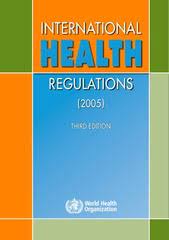A recent pilot study conducted in India has demonstrated the potential effectiveness of implementing the World Health Organization’s (WHO) Labor Care Guide (LCG) to enhance women’s care during childbirth and reduce the rates of unnecessary cesarean section deliveries. The study, published in the journal Nature Medicine, marks the world’s first randomized trial of the WHO’s LCG, offering valuable insights into its impact on clinical outcomes.
The research, led by a team including researchers from Jawaharlal Nehru Medical College in Karnataka, focused on evaluating the implementation of the novel LCG strategy in comparison to routine care. Conducted in four hospitals in India, the pilot trial aimed to assess the LCG’s feasibility in diverse clinical settings, particularly those with busy schedules and limited resources.
Study lead author Joshua Vogel, a professor at Burnet Institute in Australia, emphasized the importance of the LCG’s potential to improve clinical and supportive care for women during childbirth, aligning with the WHO’s evidence-based guidelines. While cesarean sections are crucial for medical reasons and can be lifesaving, they also carry inherent risks. Vogel noted that the LCG had the capacity to reduce unnecessary cesarean sections, contributing to improved health outcomes for both mothers and babies.
Vogel highlighted that timely and justified cesarean sections could enhance health outcomes, but the challenge lies in avoiding unnecessary procedures without compromising maternal and fetal well-being. The study results indicated that successful implementation of the LCG led to a reduction in cesarean section rates without causing additional harm.
In 2018, the WHO introduced 56 recommendations to enhance the quality of intrapartum care and improve women’s childbirth experiences. Key recommendations included redefining the active first stage of labor, starting from 5 centimeters of cervical dilation instead of the historical 3 or 4 centimeters. The ‘next generation’ partograph, the WHO LCG, was developed in 2020 in response to these evidence-based recommendations.
The collaborative research involved contributions from Burnet, international hospitals, universities, and research groups in India and Argentina. The findings of the pilot study are anticipated to guide future trials and contribute to reversing the global trend of escalating cesarean section rates. The study emphasizes the importance of evidence-based interventions and guidelines in promoting optimal maternal and fetal health outcomes during childbirth.
Note: The pilot study provides promising results for the implementation of the WHO’s Labor Care Guide, offering potential benefits in reducing unnecessary cesarean sections and improving maternal and fetal health outcomes.












